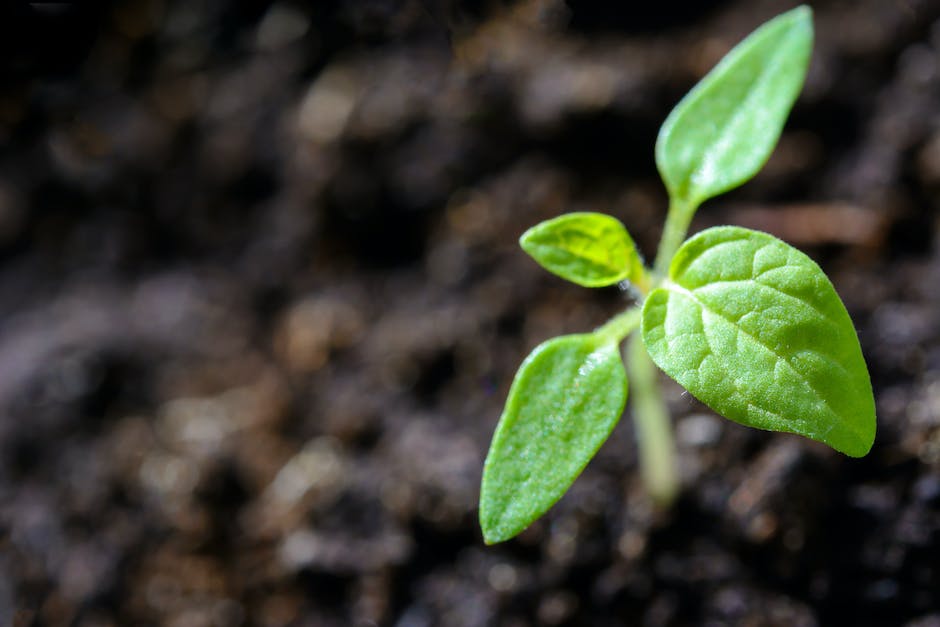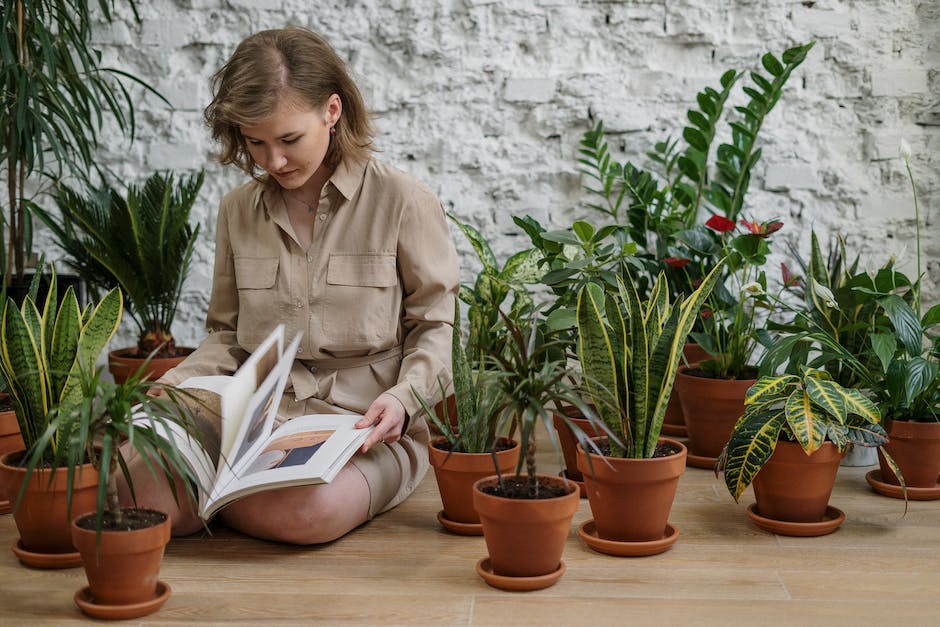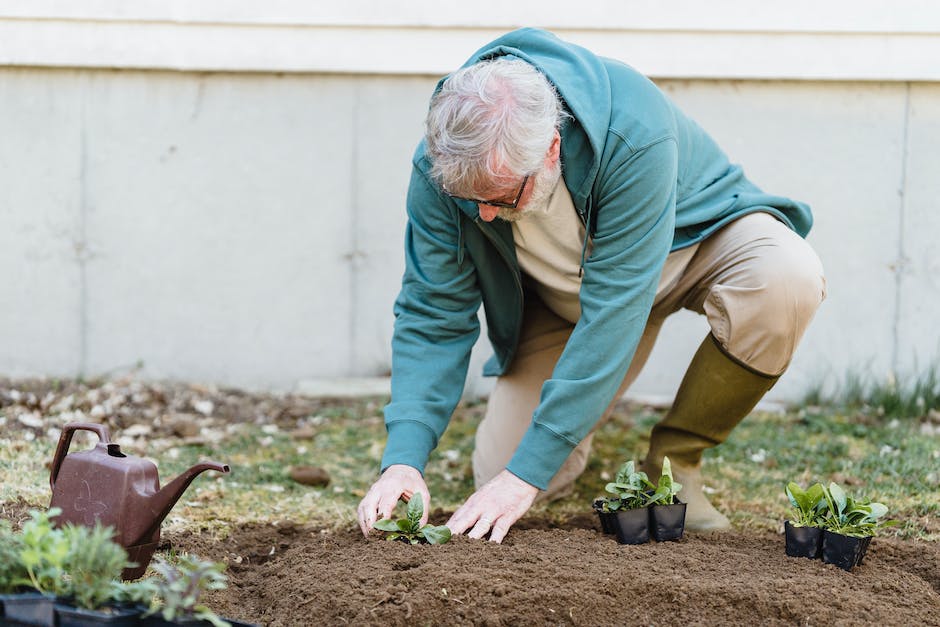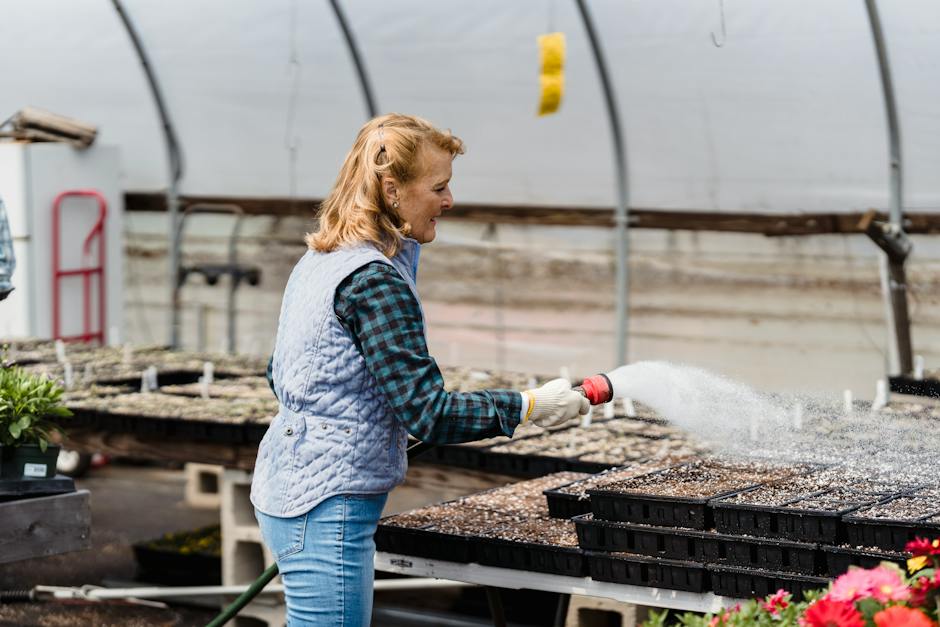Why Are My Hydroponic Plants Not Growing
Hydroponic gardening is becoming increasingly popular among both commercial farmers and home gardeners. With its ability to grow plants without the use of soil, hydroponics offers numerous benefits such as efficient use of space, water conservation, and higher yield potential. However, despite these advantages, many hydroponic gardeners may encounter challenges when it comes to plant growth. If you have been struggling with your hydroponic plants not growing as expected, don’t worry – you are not alone. In this blog post, we will explore some common reasons why hydroponic plants may not be growing and provide practical tips to help you overcome these issues. So, let’s dive in and troubleshoot the potential problems together, in order to ensure successful growth in your hydroponic garden.
– Briefly explain the popularity of hydroponics and the benefits it offers for plant growth.

Hydroponics, a method of cultivating plants without soil, has gained significant popularity in recent years. This innovative technique offers numerous benefits that contribute to optimal plant growth and improved crop production. One of the main advantages of hydroponics is the precise control it allows over the plant’s growing environment. Through carefully monitoring and adjusting factors such as nutrient levels, pH levels, and lighting conditions, hydroponic systems create an ideal environment for plants to thrive.
Additionally, hydroponics eliminates the risks associated with soil-borne diseases, pests, and weeds, making it a more sanitary and efficient option for plant cultivation. By growing plants in a soil-less medium, hydroponics ensures that nutrients are directly supplied to the roots, allowing for efficient absorption and utilization. This direct access to nutrients ultimately promotes faster growth rates and higher yields.
Another key advantage of hydroponics is water conservation. Traditional soil-based farming requires significant amounts of water, but hydroponics utilizes water in a closed-loop system, resulting in up to 90% less water usage compared to conventional agriculture. This makes hydroponics an environmentally-friendly choice that reduces water waste and helps preserve our planet’s valuable resources.
Moreover, hydroponics allows for year-round cultivation regardless of climate or location. By providing a controlled environment, hydroponic systems enable plants to grow consistently throughout the year, eliminating the limitations imposed by seasons. This opens up opportunities for farmers and gardeners to grow produce and plants that are otherwise not suitable for their local climate.
Overall, the rising popularity of hydroponics can be attributed to the host of benefits it offers for optimal plant growth. This innovative technique allows for precise control of growing conditions, eliminates soil-related risks, conserves water resources, and enables year-round cultivation. By harnessing the power of hydroponics, individuals and businesses can achieve healthier plants, higher yields, and contribute to sustainable agriculture practices.
– Highlight the problem faced by many hydroponic growers: slow or stunted plant growth.

Many hydroponic growers often find themselves frustrated with slow or stunted plant growth, despite their best efforts. This problem is undoubtedly one of the most common challenges faced by hydroponic enthusiasts. Understanding the underlying causes and potential solutions for this issue is crucial for ensuring successful and thriving hydroponic gardens.
Several factors can contribute to slow or stunted plant growth in hydroponic systems. One of the primary culprits is nutrient imbalance or deficiency. In hydroponics, plants rely solely on nutrient-rich water for sustenance, making it essential to maintain an optimal nutrient balance. Insufficient or imbalanced nutrients can limit plants’ ability to grow and develop properly, resulting in slower growth or even stunting.
Additionally, inadequate lighting can significantly impact plant growth in hydroponic setups. Plants require a specific amount and quality of light to perform photosynthesis and drive their growth. Insufficient lighting or an improper light spectrum can hinder the productivity of plants, leading to slower growth rates and weaker overall development.
Furthermore, temperature and humidity levels in the hydroponic environment play a crucial role in plant growth. Extreme temperature fluctuations, high humidity, or low airflow can stress plants and impede their growth potential. Hydroponic gardeners must provide a stable and controlled environment to ensure optimal conditions for plant growth and productivity.
In some cases, poor water quality can also hinder hydroponic plant growth. Water with high levels of contaminants, such as chlorine or heavy metals, can damage plants’ ability to take up nutrients effectively. It is crucial to use filtered or purified water in hydroponic systems to avoid introducing harmful substances that can impede plant growth.
Lastly, improper pH levels in the nutrient solution can negatively affect plant growth. Different plant species have different pH preferences, and maintaining the appropriate pH range is vital for nutrient absorption. If the pH deviates too far from the ideal range, plants may struggle to take up essential nutrients, leading to slow or stunted growth.
To address the problem of slow or stunted plant growth in hydroponics, growers should take a systematic approach. Regularly monitoring and adjusting nutrient levels, ensuring proper lighting conditions, optimizing temperature and humidity, using filtered water, and maintaining the correct pH levels are all essential steps that can help stimulate healthy and robust plant growth in hydroponic gardens.
Understanding the potential challenges and implementing appropriate corrective measures are key to unlocking the full potential of hydroponic systems. With careful attention and proactive troubleshooting, hydroponic growers can overcome the hurdle of slow or stunted plant growth, ultimately achieving flourishing and productive gardens.
Suboptimal nutrient solution (2)

The success of hydroponic plant growth heavily relies on providing the plants with the right nutrients in the right amounts. However, one common reason why hydroponic plants may not be growing as expected is the presence of a suboptimal nutrient solution.
A nutrient solution typically consists of essential macronutrients such as nitrogen, phosphorus, and potassium, as well as essential micronutrients like iron, magnesium, and zinc. These nutrients are dissolved in water and directly supplied to the plants’ roots. The nutrient solution acts as a substitute for soil, providing the necessary elements for plant growth.
If your hydroponic plants are not growing as anticipated, a suboptimal nutrient solution could be the culprit. There are a few factors to consider:
1. Imbalanced Nutrient Concentrations: It is important to maintain the correct concentration of nutrients in the solution. Too much or too little of any nutrient can be detrimental to plant growth. An imbalance can lead to deficiencies or toxicities, causing stunted growth or nutrient burn. Regularly monitor and adjust the nutrient levels to ensure they are within the optimal range.
2. Lack of Essential Nutrients: Sometimes, the nutrient solution may be lacking in certain essential nutrients. This can occur if the solution is not properly formulated or if the plants are not receiving all the necessary elements. It is crucial to ensure that the nutrient solution contains all the required macronutrients and micronutrients to support healthy plant growth.
3. Poor Nutrient Uptake: Even if the nutrient solution is properly balanced, plants may not be able to effectively absorb the nutrients due to poor root health or root damage. A healthy root system is essential for nutrient uptake, so it is important to regularly inspect the roots and address any issues affecting their function.
4. Inadequate pH Level: The pH level of the nutrient solution plays a significant role in nutrient availability to the plants. If the pH is too high or too low, plants may struggle to uptake certain nutrients, even if they are present in the solution. Regularly monitor and adjust the pH levels to ensure it is within the optimal range for your specific plant types.
To address suboptimal nutrient solutions, it is essential to closely monitor and adjust nutrient concentrations, ensure all essential nutrients are present, maintain a healthy root system, and monitor and adjust the pH levels. By addressing any issues related to the nutrient solution, you can help your hydroponic plants thrive and achieve optimal growth.
– Discuss the significance of a balanced nutrient solution in hydroponics.

In hydroponics, a balanced nutrient solution is crucial for the healthy growth and development of plants. Unlike traditional soil-based gardening, where plants obtain nutrients from the soil, hydroponics relies on a nutrient solution to provide essential elements directly to the plant roots. This nutrient-rich solution serves as the sole source of nutrition, making it imperative to maintain a proper balance.
A balanced nutrient solution contains the essential macro and micronutrients necessary for plants to thrive. These nutrients include nitrogen, phosphorus, potassium, calcium, magnesium, and various trace elements. Each element plays a unique role in the plant’s growth, ranging from supporting the formation of chlorophyll molecules for photosynthesis to facilitating enzyme reactions responsible for nutrient uptake and metabolism.
Maintaining the right balance of nutrients is crucial because an excess or deficiency of any element can adversely impact plant growth. An inadequate supply of nutrients can lead to stunted growth, yellowing leaves, or overall poor plant health. On the other hand, an excess of certain nutrients can result in nutrient toxicity, causing leaf burn, root damage, or even plant death.
To achieve a balanced nutrient solution, hydroponic growers carefully monitor and adjust nutrient levels according to the specific needs of their plants. This is typically done through regular testing of the nutrient solution’s pH and electrical conductivity (EC) levels. pH refers to the acidity or alkalinity of the solution, while EC indicates the concentration of dissolved nutrients. By maintaining optimum pH and EC ranges, growers can ensure that plants can absorb nutrients efficiently.
Moreover, hydroponic systems may require periodic adjustments to nutrient concentration based on different growth stages. For instance, young plants may require a higher concentration of nitrogen for vigorous leaf development, while flowering plants may benefit from increased phosphorus levels to promote blooming.
It is also worth noting that the composition of the nutrient solution can vary depending on the type of plants being grown. Different plant species have varying nutrient requirements, and understanding these specific needs is crucial for achieving optimal growth.
In conclusion, a balanced nutrient solution is a fundamental aspect of successful hydroponic gardening. By providing plants with the right combination of essential elements, growers can ensure healthy growth and maximize crop yields. Regular monitoring and adjustment of nutrient levels, based on pH, EC, and growth stage requirements, are essential practices for maintaining a thriving hydroponic system.
– Explain possible reasons for nutrient imbalances, such as incorrect dilution or pH levels.

One of the main reasons why hydroponic plants may not be growing as expected is nutrient imbalances. Nutrient imbalances can occur due to factors such as incorrect dilution or pH levels in the nutrient solution.
Firstly, if the nutrients in the solution are not properly diluted according to the manufacturer’s instructions, it can lead to imbalances. This means that the plants may not be receiving the right amount of essential minerals and elements necessary for their growth. It is crucial to follow the recommended dosage instructions to ensure the correct nutrient concentrations for optimal plant growth.
Secondly, pH levels play a significant role in nutrient uptake by plants. If the pH of the nutrient solution is too high or too low, it can hinder the plants’ ability to absorb the nutrients they need. Ideally, most hydroponic plants thrive in a pH range of 5.5 to 6.5. Regular monitoring of pH levels and adjustments using pH testing kits or pH regulators can help maintain a suitable environment for nutrient absorption.
Another common cause of nutrient imbalances is the accumulation of salts in the growing medium over time. These salts can throw off the nutrient ratios and prevent the plants from absorbing nutrients efficiently. To counteract this, it is recommended to flush the system regularly or adjust the nutrient solution formulation based on the specific needs of the plants.
Furthermore, insufficient or excessive nutrient feeding can also contribute to imbalances. Providing too little or too much of specific nutrients can negatively impact plant growth. It is essential to understand the specific nutrient requirements of each plant species and adjust the feeding accordingly.
Lastly, it is crucial to consider the quality of the nutrient solution itself. Using low-quality or expired nutrients may result in imbalances or inadequate nutrient availability. Always use fresh, high-quality nutrient solutions from reputable manufacturers to ensure the best possible growth outcomes.
In conclusion, nutrient imbalances can impede the growth of hydroponic plants. Incorrect dilution or pH levels in the nutrient solution, accumulation of salts, improper nutrient feeding, and the use of low-quality nutrients can all contribute to these imbalances. By carefully monitoring and adjusting these factors, it is possible to resolve these issues and promote healthy and vigorous plant growth in hydroponic systems.
– Offer solutions, such as adjusting nutrient ratios and regularly monitoring pH levels.

One of the common challenges in hydroponic gardening is when your plants are not growing as expected. This can be frustrating, especially when you have put in effort and resources into creating the ideal growing environment. However, understanding the potential reasons behind stunted growth and taking appropriate actions can help rectify the situation.
One of the first steps to take is to analyze and adjust the nutrient ratios in your hydroponic system. Just like traditional soil gardening, plants require a balanced mix of essential nutrients for healthy growth. If your plants are not flourishing, it is possible that the nutrient solution might be lacking key elements or ratios might be imbalanced. Conduct a thorough analysis of the nutrient composition, ensuring that all essential macronutrients (nitrogen, phosphorus, potassium) and micronutrients (calcium, magnesium, iron) are present in sufficient quantities. Adjusting the nutrient ratios according to the specific needs of your plants can stimulate growth and overcome nutrient deficiencies.
Another crucial aspect to consider is the pH level of your hydroponic solution. pH levels determine the availability of nutrients to your plants and play a significant role in overall growth. Most hydroponic plants prefer a slightly acidic to neutral range, usually around pH 5.5 to 6.5. If the pH level deviates from this range, nutrient uptake can be compromised, negatively affecting plant growth. Regularly monitoring and adjusting the pH level of your hydroponic system will ensure that your plants can efficiently absorb the nutrients they need.
In addition to nutrient ratios and pH levels, environmental factors such as temperature, humidity, and lighting also play vital roles in the growth of your hydroponic plants. Ensure that your plants are exposed to adequate light, matching their specific requirements. Consider providing appropriate heating or cooling mechanisms to maintain optimal temperatures. Additionally, maintaining consistent humidity levels within the recommended range can significantly influence plant growth.
Regular monitoring of your hydroponic garden is essential to spot any signs of plant stress or nutrient deficiencies early on. Keep a close eye on the appearance of your plants, ensuring they exhibit healthy characteristics such as vibrant foliage, strong stems, and robust root systems. If any abnormalities are observed, take immediate action to identify and rectify the underlying issue.
Remember, troubleshooting in hydroponic gardening is an ongoing process that requires patience and attention to detail. By adjusting nutrient ratios, regularly monitoring pH levels, and ensuring optimal environmental conditions, you can address the issue of stunted growth in your hydroponic plants and pave the way for healthy and thriving harvests.
Inadequate lighting (2)

Inadequate lighting:
One common reason why hydroponic plants may not be growing as expected is inadequate lighting. Just like outdoor plants, indoor hydroponic plants need sufficient light to carry out photosynthesis and promote healthy growth.
Light is crucial for plants as it serves as their energy source. Inadequate lighting can result in stunted growth, thin and weak stems, pale or yellowing leaves, and overall unhealthy plants. While some plants require more light than others, it is important to ensure that your hydroponic garden receives an adequate amount of light to support its growth.
When it comes to lighting for hydroponics, there are a few factors to consider. The first is the intensity of the light. Different plants have different light intensity requirements, so it’s essential to determine the needs of the particular plants you are growing. Using a lux meter or a light meter can help you measure the light intensity in your growing area, ensuring that it falls within the optimal range for your plants.
The second factor to consider is the duration of light exposure. Most plants require a certain number of hours of light per day to carry out photosynthesis effectively. It is common for hydroponic gardens to use artificial lighting systems to provide plants with consistent light exposure. LED grow lights are a popular choice as they are energy-efficient and can be adjusted according to the needs of different plant varieties.
Lastly, the quality of light is also important. Natural sunlight contains a spectrum of different wavelengths that plants need for specific stages of growth. While artificial lighting systems can provide a similar spectrum, it is crucial to ensure that the lights used in your hydroponic garden are specifically designed for plant growth. Full-spectrum LED grow lights are commonly recommended as they mimic the natural light spectrum and provide all the necessary wavelengths for plants to thrive.
If you suspect that inadequate lighting is hindering your hydroponic plant growth, it’s important to assess and address the issue promptly. Consider evaluating the light intensity, duration, and quality in your growing area and make necessary adjustments. Providing your plants with the right amount and quality of light can make a significant difference in their overall health and productivity.
– Emphasize the importance of proper lighting for photosynthesis in plants.

Proper Lighting: The Key to Maximizing Photosynthesis
One of the most crucial factors affecting the growth of hydroponic plants is the availability of adequate lighting. As photosynthesis is the fundamental process that allows plants to convert light energy into chemical energy, providing the right amount and quality of light is essential for their thriving.
In a hydroponic system, where plants are grown without soil and receive nutrients directly through water, the importance of lighting becomes even more prominent. Unlike traditional gardening, where sunlight often suffices, hydroponic plants heavily rely on artificial light sources that can mimic the spectrum of natural sunlight.
When it comes to selecting appropriate lighting for your hydroponic setup, there are a few key factors to consider. First and foremost is the intensity of the light. Plants require different levels of intensity at each stage of growth. Insufficient light can result in stunted growth and weak, spindly plants, whereas excessive light can lead to heat stress and leaf burn. Striking the right balance is crucial to ensuring optimal photosynthesis and maximizing plant growth.
Additionally, the spectrum of light plays a significant role in the growth and development of hydroponic plants. Different wavelengths of light contribute to various aspects of plant growth, such as leaf formation, root development, flowering, and fruiting. The combination of blue and red lights has proven to be particularly beneficial for hydroponic cultivation, as blue light stimulates vegetative growth while red light promotes flowering and fruiting.
Furthermore, the duration of lighting, or the photoperiod, is another crucial factor for plant growth. Just like in traditional gardening, hydroponic plants need a specific period of darkness to allow for rest and rejuvenation. Providing a consistent and appropriate photoperiod ensures that plants have ample time for essential processes like respiration and nutrient absorption, leading to healthy and robust growth.
In summary, understanding the significance of proper lighting in hydroponic systems is crucial for troubleshooting any growth issues. By ensuring adequate light intensity, utilizing the appropriate light spectrum, and maintaining a suitable photoperiod, you can create the optimal conditions for photosynthesis and promote the flourishing growth of your hydroponic plants. So, don’t overlook the power of light – it’s the key to unlocking the full potential of your hydroponic garden.

